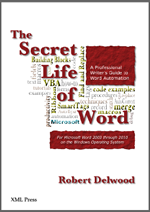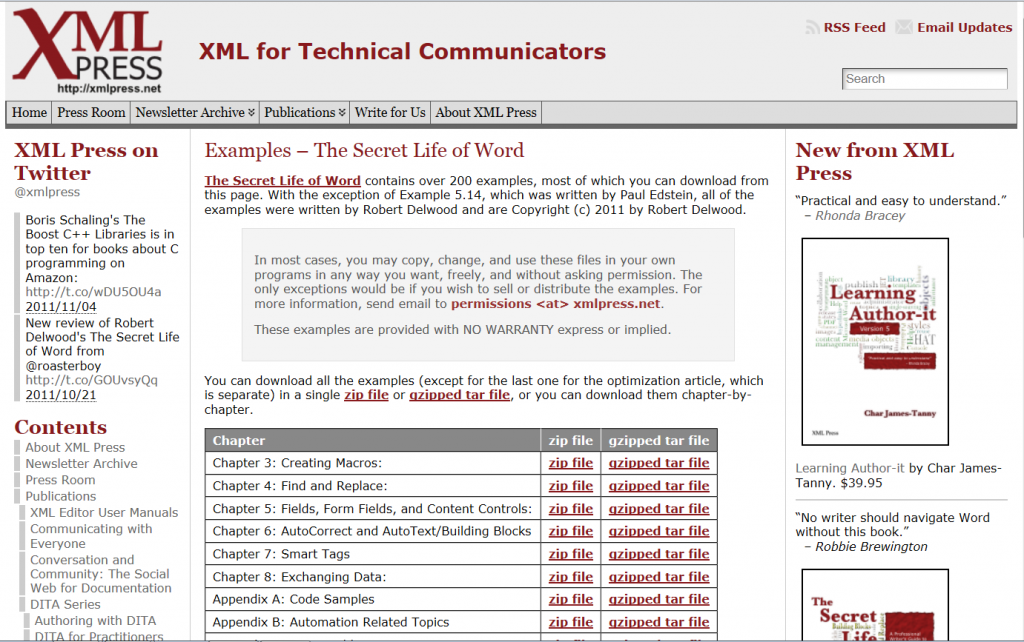
Publisher: XML Press (May 16, 2011) Paperback: 274 pages Language: English ISBN-10: 0982219164 ISBN-13: 978-0982219164
While I was trying to keep Word’s new ribbons from getting tangled in my hair, Robert Delwood was unlocking and enabling the powerful automation available to all of us in Word 2003, 2007 and 2010. Written with the challenges of the technical writer in mind in an easy, accessible voice, The Secret Life of Word is a great resource for overcoming the challenges that non-programmer technical writers face using Word to create, edit and automate technical documents.
With an encouraging voice of reason, Delwood confirms our suspicions that Microsoft really has hidden away some of our favorite functions without so much as a “by your leave” (and without offering much in the way of tutorials). But then, he helps you rebuild what the new versions took away and much more. This book will help you re-instate yourself as the MS Word guru in your office.
Delwood’s easy-to-follow instructions and clear prose take us through the trial, error and final victory of creating effective macros. He helps us unlock powerful Find and Replace coding that’ll have you speeding through creating consistency from a document in which too many contributors spoiled the doc. He covers Fields, Content Controls, AutoCorrect with helpful tips you wish you knew years ago and helps readers make a sensible transition to using Building Blocks. I’ve already implemented a few of his tips and am loving the results. A full chapter on SmartTags unleashes the power of what Delwood calls an under-appreciated productivity tool.
To support readers in making the most of the over 200 examples, the publisher provides downloads of all examples at http://xmlpress.net/publications/word-secrets/examples/. This is one of the most generous things a publisher has ever done for me. Along with some of the handiest little Find and Replace codes EVER (that’ll make quick work of things like ensuring there are two spaces after each period), there is some great Visual Basic code for more advanced users including a simple 8-line procedure that clears away Word’s legendary HTML bloat.
The book has something for everyone from novices to ninjas. Delwood intends the book as a desk reference to peruse and use as needed when trying to solve the daily challenges technical writers face using Microsoft Word. And he’s right to present it that way. Unless you have a powerful love of reading code, it’s too much for a straight-through read.
For those of us who’ve been waiting for a book that will truly help us take our Word skills to the next level and help us solve the problems that come with using Word for longer documents, The Secret Life of Word is here.
